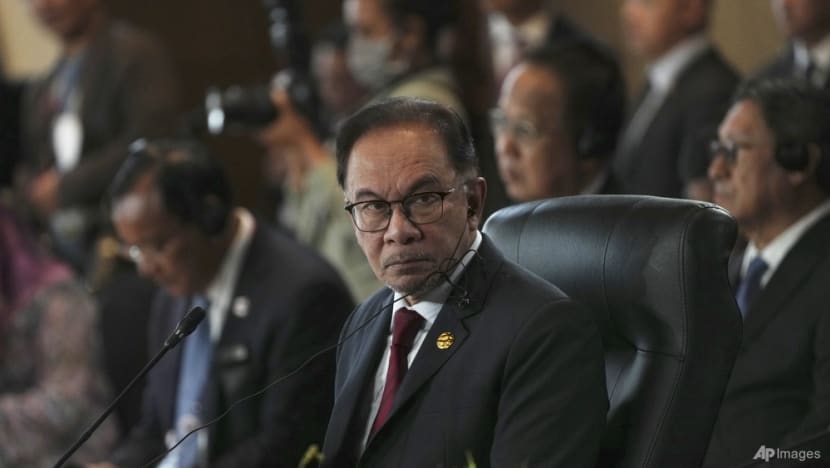analysis Asia
Challenging for Malaysia’s national retirement fund to pivot towards domestic market

KUALA LUMPUR: The Employees Provident Fund (EPF), an RM1 trillion (US$222.2 billion) state investment vehicle, has been asked by the Anwar Ibrahim administration to increase the size of its domestic portfolio in order to spur the Malaysian economy.
However, this pivot is not a straightforward exercise, those familiar with the issue told CNA.
A set of withdrawals in 2021 and 2022 was approved by the administrations of Muhyiddin Yassin and Ismail Sabri Yaakob to help ordinary Malaysians contributing to the pension fund deal with financial difficulties during the COVID-19 pandemic. The withdrawals have radically altered the national savings demographic for a rapidly ageing nation that is already facing challenges over the lack of pension coverage.
Following the withdrawals, the median savings of EPF account holders halved in 2022 compared to 2019, Deputy Finance Minister Ahmad Maslan told parliament in February this year.
Mr Anwar, who has taken a politically unpopular stand against further withdrawals, noted more recently that 81 per cent of EPF’s roughly 15 million contributors will not have sufficient savings to live above the poverty line when they retire. He added that only 19 per cent have RM240,000 in their personal financial reserves by the time they reach the retirement age of 55 years.
RM240,000 is the basic savings target for contributors when they retire at the age of 55, but analysts and economists believe that the benchmark is no longer feasible with the sharp rise in the cost of living.
On the other end of the spectrum, 0.5 per cent of EPF members, who collectively have 12.4 per cent of the savings managed by the fund in end-2020, have at least RM10 million each saved with the pension fund.
This lopsided coverage profile has led to criticism that the EPF has morphed into an investment and savings vehicle for the rich. Senior pension fund executives told CNA that this impression is tough to refute.
The prime minister has also asked EPF to invest more domestically to aid the economy. “This is for the current needs of the country and taking into account the needs of the people,” he said earlier this month.
The EPF, which the World Bank ranked as the 15th largest pension fund globally in a 2018 study that also credited the institution for its strong governance culture, has a central role in the economy.
Set up in 1949, eight years before Malaysia gained independence, the EPF has grown in both size and stature. It has investments in all major markets, in particular North America, Europe and Asia, as well as direct investments in equities, fixed-income financial instruments, real estate and infrastructure.
EPF’s asset base of over RM1 trillion is larger than all the other government-linked investment corporations, such as government fund management company Permodalan Nasional Bnd (PNB), the government pension fund known as KWAP, sovereign wealth fund Khazanah Nasional Bhd and the army pension fund called LTAT, put together.
EPF’S ROLE IN ECONOMIC DEVELOPMENT
The EPF has been instrumental in Malaysia’s economic development.
Bank Muamalat’s chief economist Mohd Afzanizam Abdul Rashid noted in the past, temporary reductions in the EPF contribution rate have provided extra cash in hand which were used to shore up the economy, and these have been effective.

The contribution rate for members was reduced from 11 per cent to 9 per cent between April 2001 and March 2002 to deal with the collapse in the technology sector as well as the 9/11 terrorist attack in the United States in 2001.
The EPF stepped in once again between June 2003 and May 2004 by cutting the contribution rate by two percentage points to 9 per cent to stabilise the economy during the SARS pandemic in 2003. Between Jan 2009 and Dec 2010, the rate was lowered by three percentage points to 8 per cent during the 2008 global financial crisis. The rate was reduced again to 9 per cent during the COVID-19 pandemic.
Fund officials noted that the EPF’s fund size typically grows by 8 per cent annually, with net contributions amounting to roughly RM40 billion, or about half, and the remainder from investment income, according to executives at the agency.
But the steady growth trajectory was disrupted by the COVID-19 health crisis.
The fund rode the storm because of its ability to deliver consistent returns, largely due to its robust investments in overseas markets, noted Bank Muamalat’s Mr Mohd Afzanizam.
“The strong point for EPF has been its ability to seize on opportunities at home and abroad,” he said, adding that any cap on investment overseas would be disadvantageous for the pension fund.
PIVOTING TOWARDS DOMESTIC INVESTMENTS
EPF’s solid financial standing has prompted the Anwar administration to lean more heavily on the fund to spur the economy with a controversial proposal to increase the size of its domestic investments to 70 per cent this year from 64 per cent at the end of 2022. This has been criticised by private economists as government intervention in the agency’s management.
EPF officials, who spoke on condition of anonymity, noted that the six percentage point increase is something that will be hard to meet.
“EPF is a huge supercarrier and to change direction will take time especially when a six percentage point increase means RM60 billion,” said one senior executive at the pension fund’s portfolio investment division, adding that Mr Anwar's latest request could take at least three years to realise.
Private economists agree.

“There will naturally be an increase in EPF’s investments locally with the higher expansion in the domestic economy but the size should not be something cast in stone because the fund should have the global economy as its market to get the best returns,” Sunway University’s professor Yeah Kim Leng, who also sits on the five-member economic advisory panel to Mr Anwar, told CNA.
Prof Yeah added that the government's focus should be on introducing new policies to encourage savings through incentives and measures to improve the earning potential of ordinary citizens by ensuring longer employment and delaying the retirement age.
“What is needed is to motivate and incentivise ordinary Malaysians by raising financial literacy, which is now lacking,” he said.
The size of EPF’s foreign assets has been growing steadily from 13 per cent of its portfolio in 2011 to a high of 37 per cent in 2021, before easing slightly to 36 per cent in 2022.
“It is only right to allow EPF to grow their assets based on their commercial judgments,” said Mr Mohd Afzanizam regarding the government’s proposal to cap its foreign investments at 30 per cent of the fund’s size.
















